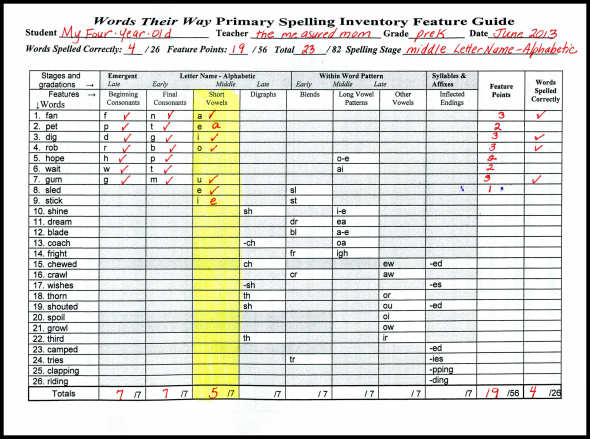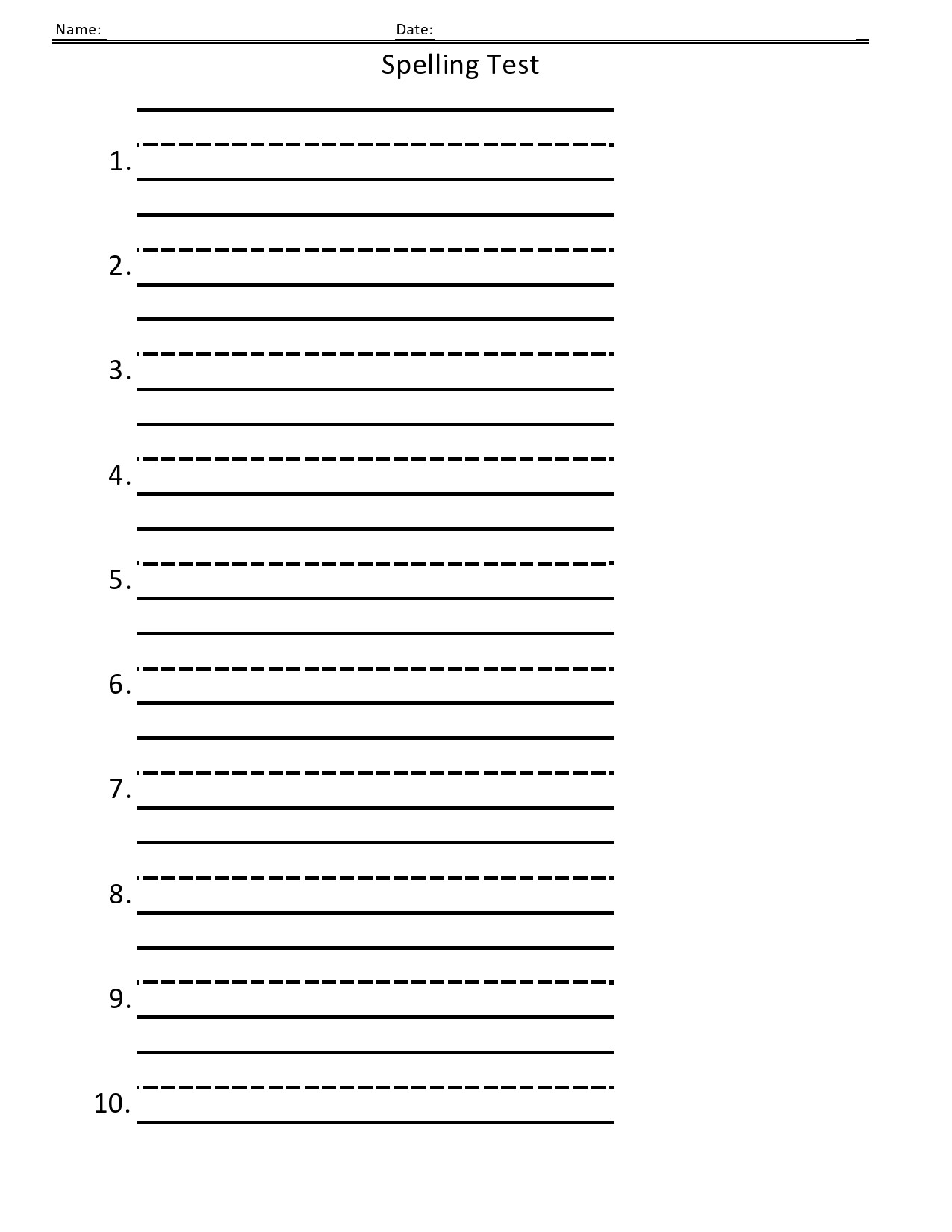There are a number of literacy diagnostic tests that may be of use when you are starting to assess children needing literacy support.
- Typing Test
- Word Identification And Spelling Test Manual 5th
- Word Identification And Spelling Test (wist) Pdf
Components: Test, Manual, Spelling Cards, Word Cards, Record Booklets and Response Forms. This product requires a check of customer qualifications. Measures word identification, spelling, and sound-symbol knowledge. Identifies students who are struggling with reading and spelling. The WIST has three subtests which can be used in either the Norm-Referenced or Informal assessment. The Norm-Referenced assessment has two 'core' subtests (Word Identification and Spelling) and one 'supplemental' subtest (Sound-Symbol Knowledge) and a composite score (called the Fundamental Literacy Index).
South Australian Spelling Test
This test will give a spelling age of the children in your class. It is a good idea to administer the test at the beginning, middle and end of the school year. The test will give you an age range from 6-15 years. You will be able to see the spelling ability of each student. The data collected from the South Australian Spelling test can be used when teacher’s design lessons, support programs, reporting as well as grouping students accordingly. I would advise teachers to collate data in an excel spreadsheet. You can have the name of the child, date of birth, age then spelling age according to the South Australian Spelling Test markers guide.
Data collated can then be turned into graphs and further analysis made. Download the South Australian Spelling Test PDF here.
Waddington Diagnostic Reading Test
The Waddington is a clearly set out diagnostic test presented in an A4 size book within which are the photocopiable tests. The front page accommodates student, school and assessment details. A small ‘sample’ test section is provided to assist with explanation of the test tasks. The tests begin very simply with basic picture/sound cues then gradually become more difficult and complex. Support students can do Test 1 in the second term and Test 2 in the fourth term. It easy to follow and are not daunted by it nor do they find it threatening. The Waddington tests have clear understood and guidelines for teachers giving the test. The test is not too long (30 minutes) and easy to mark, yet valid when it comes to assessing the literacy of the students. Waddington states, (2000)“It is a very useful and efficient screening device,” I agree with Waddington (1988) in that the ‘true value of this test lies in the diagnostic information which can be extracted for programming purposes. (P4)
The strengths of these tests are that they provide an extensive diagnostic tool that enables the teacher to diagnose and/or detect difficulties with the following:
- Picture/vocabulary knowledge
- Speech irregularities
- Potential word reversals
- Specific vowel differences
- Two letter consonant blending knowledge
- Ability to verify/discern beginning/endings of words
- Small words within words knowledge
- Ability to verify/discern dipthongs and digraphs
- The combining of grapho-phonic and syntactic/semantic based skills
- Syntax knowledge
- Left to right movement
- Conceptual understanding for specific words
- Use of picture cues
- Knowledge of rhyme
- Correct use of indirect picture cues
- The decoding of mixed words and specific knowledge of common subjects
- Comprehension of complex sentences
- Knowledge of a students particular vocabulary for example, synonyms and antonyms
As Waddington (2000) states these are only a few of the literacy difficulties that may be diagnosed with these tests. (Pages 13/14)
This knowledge is invaluable to the teacher who desires to plan/program appropriately for the needs of the student with learning difficulties and enables the teacher to hone in and focus on any learning difficulties.
There is an updated Waddington Diagnostic Standard and Advanced Reading and Spelling Tests 1 & 2 Third Edition – NEW FOR 2012 !

Tests of Reading Comprehension (TORCH TEST)
Range:Years 3-10 and special needs groups
Purpose: To identify comprehension levels, to measure progress and to use content-referenced interpretation to identify those skills requiring further instruction.
Administration: Untimed, approximately 30 minutes – individual or group
This bestselling Australian test of reading comprehension has been fully revised and builds on the popular features of the original test with substantial improvements. Tests of Reading Comprehension (TORCH) is a professionally developed reading assessment that has been thoroughly pilot tested in Australian schools. It assists teachers to interpret performance in reading comprehension skills and provides the opportunity to compare student performance with an Australia-wide sample of over 7000 students from years 3 to 10.
TORCH can be used for a variety of purposes:
- As a broad estimate of reading achievement
- To help assess the extent to which objectives of the school’s reading curriculum are being achieved
- As confirmation or to supplement other estimates of a student’s achievement in reading
- To provide information which may be used in setting realistic goals and planning effective programs of work
- To identify students who are making unsatisfactory progress so that they may be given special diagnostic and remedial attention
- To locate areas of weakness and strength for individuals or within a class
- To monitor student reading achievement over time

Key Features
- Australian
- All new normative data
- More information for teachers to select reading passages that are appropriate for students
- Descriptive report to assist teachers build a picture of a student’s developing reading comprehension skills
- Graded fiction and non-fiction passages to meet class, group or individual needs
- Norm-referenced interpretation based reported in percentiles and stanines at each year level
- Content-referenced interpretation based on described levels of achievement
Middle Years Ability Test (MYAT)
Range Middle Years students: last two years of primary, first two years of secondary.
Purpose To provide a measure of general ability.
Administration 45 minutes — group
The Middle Years Ability Test (MYAT) is a test of general ability designed to assist teachers in their assessment of students aged 10–15 years.
MYAT is a completely revised and updated edition of the ACER Intermediate Tests F and G.
As well as verbal and numerical reasoning items in the tradition of the ACER Intermediate Tests, MYAT includes non-verbal (or abstract) reasoning items, giving a more complete picture of students’ general ability.
Key Features:
- Excellent group test of general ability
- Contains literacy, numeracy and non-verbal items in two parallel forms
- Up-to-date Australian norms
- Can be used to help in identification of gifted and talented students
- Machine scored through ACER’s test scoring service or handscored
- The MYAT Report provides an overall ability score and a profile of the student’s performance in each of the three sub-scale areas.
Assessment Content: 75 multiple-choice items:
- Numeracy – 25 items which provide information about the extent to which a student can exercise basic numeracy skills, is a discriminating and accurate user of mathematical methods, and can reason, solve and construct meaning from number problems.
- Literacy – 25 items which provide information about the extent to which a student can exercise basic literacy skills, is a discriminating and accurate word user, and can reason and construct meaning from text.
- Non-verbal – 25 items which provide information about the extent to which a student can discover principles and rules, and apply them to solve problems using abstract visual patterns rather than numbers or words.
Neale Analysis of Reading Ability
Range: 6–12.11 years of age and special needs students through to adult level
Administration: Untimed, approximately 20 minutes – individual
Typing Test
Key Features:
- Bestselling reading assessment tool
- Diagnoses specific reading needs
- Provides standardised scores, reading ages and national profile levels
- Facilitates appropriate teaching strategies
- Provides for recording of qualitative information
Assessment Content:
- Oral reading and comprehension
- Discrimination of initial and final sounds
- Names and sounds of the alphabet
- Graded spelling
- Auditory discrimination and blending
- Word lists
- Silent reading and writing
Specimen Set includes a Manual, Test Booklet Reader, Record Standardised Test Form 1, Record Standardised Test Form 2, Record Diagnostic Tutor Form A and Record Diagnostic Tutor Form B – also available with video
Comments
comments

Word Identification And Spelling Test Manual 5th
